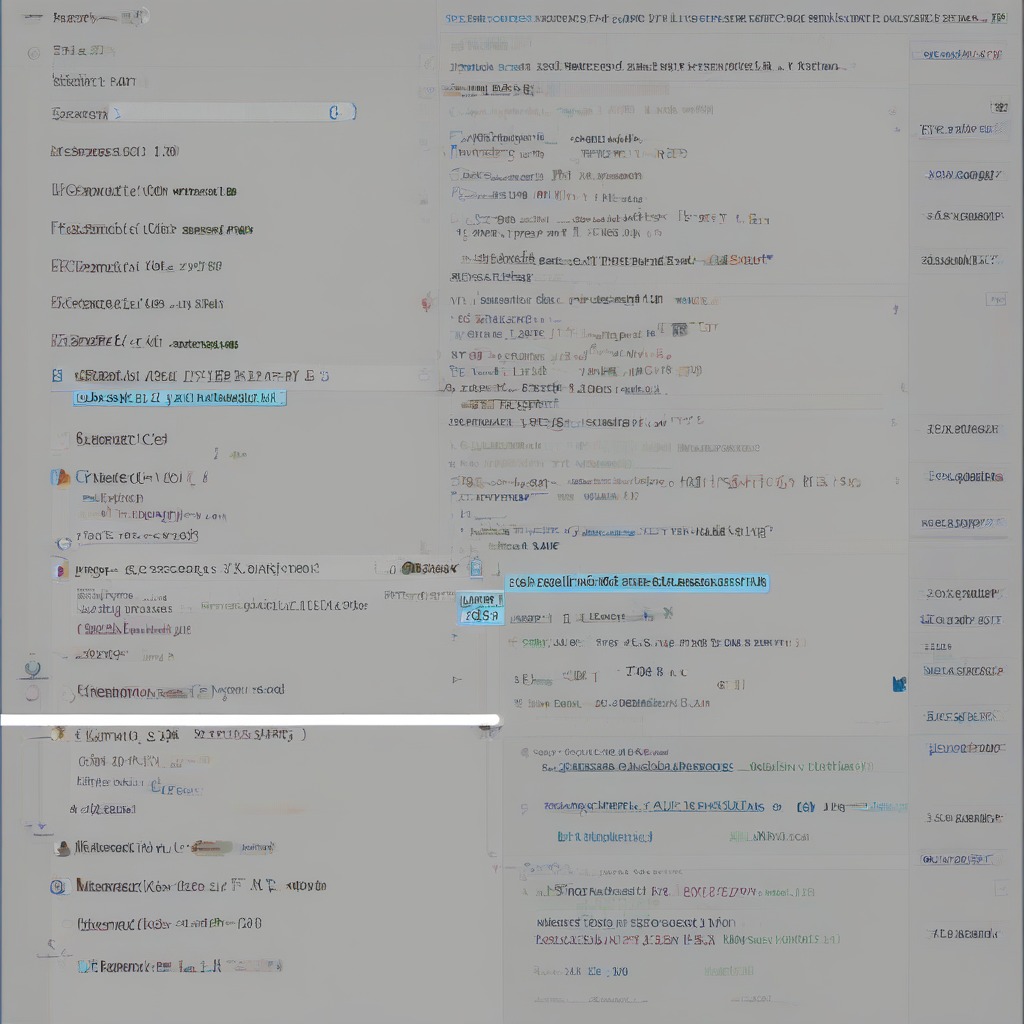Ecommerce Conversion Rate Optimization: A Comprehensive Guide
In the competitive world of online retail, a high conversion rate is the holy grail. It signifies that your website effectively converts visitors into paying customers, translating traffic into tangible revenue. But achieving a stellar conversion rate requires more than just throwing up a website and hoping for the best. It demands a strategic and data-driven approach that focuses on every step of the customer journey.
This comprehensive guide will delve into the intricacies of ecommerce conversion rate optimization (CRO), equipping you with the knowledge and tools to maximize your online store’s potential. From understanding the fundamentals to implementing advanced strategies, we’ll cover all aspects of CRO, empowering you to elevate your conversion rates and drive significant business growth.
Understanding Conversion Rate and Its Importance
Before diving into optimization strategies, let’s define conversion rate and grasp its significance in the ecommerce ecosystem.
What is Conversion Rate?
Conversion rate is a metric that measures the percentage of website visitors who complete a desired action, such as making a purchase, signing up for a newsletter, or filling out a contact form. In ecommerce, the primary conversion action is typically a purchase.
The formula for calculating conversion rate is simple:
**Conversion Rate = (Number of Conversions / Number of Visitors) x 100**
Why is Conversion Rate Crucial?
A high conversion rate is essential for several reasons:
- Increased Revenue: Higher conversion rates translate directly into more sales, boosting your revenue and profitability.
- Improved ROI: By maximizing the number of conversions from your website traffic, you optimize your return on investment (ROI), making your marketing efforts more efficient.
- Enhanced Customer Satisfaction: A smooth and user-friendly checkout process that facilitates conversions leads to greater customer satisfaction, encouraging repeat business and positive word-of-mouth referrals.
- Competitive Advantage: In a crowded online marketplace, businesses with higher conversion rates gain a competitive edge, outperforming rivals and attracting more customers.
The 5 Pillars of Ecommerce Conversion Rate Optimization
Effective CRO is not a one-size-fits-all approach. It requires a holistic strategy that encompasses multiple elements, each contributing to a seamless and enticing customer experience. We’ll explore the five essential pillars of CRO, outlining their significance and practical implementation.
1. User Experience (UX) Optimization
Importance of UX
User experience (UX) is the cornerstone of successful CRO. It’s about creating an intuitive, engaging, and frictionless online experience for your customers, guiding them effortlessly towards conversion.
Key Aspects of UX Optimization
- Website Speed: Slow loading times are a major conversion killer. Optimize your website’s speed to provide a seamless browsing experience and prevent potential customers from abandoning their carts.
- Mobile Responsiveness: With mobile commerce booming, ensure your website is fully responsive across all devices, providing a consistent and user-friendly experience on smartphones and tablets.
- Navigation: A clear and logical navigation structure is crucial for guiding visitors to the products they’re looking for. Make sure your website’s menus, categories, and internal links are intuitive and easy to use.
- Search Functionality: Provide a robust search bar and filters that allow visitors to easily find the products they need. A poor search experience can frustrate customers and lead to them leaving your site.
- Product Pages: High-quality product images, detailed descriptions, and customer reviews are essential for enticing purchases. Ensure your product pages are informative and visually appealing.
2. Persuasive Copywriting
The Power of Words
Words have the power to influence and persuade. Compelling copywriting is vital for capturing visitor attention, highlighting product benefits, and driving conversions.
Tips for Persuasive Copy
- Clear and Concise Language: Use simple and straightforward language that everyone can understand. Avoid jargon and technical terms that might confuse visitors.
- Benefit-Oriented Messaging: Focus on the benefits your products offer, not just their features. Explain how your products can solve customer problems or improve their lives.
- Strong Calls to Action (CTAs): Use clear and compelling CTAs that tell visitors exactly what you want them to do, such as “Add to Cart,” “Buy Now,” or “Learn More.” Make your CTAs visually prominent and easy to click.
- Urgency and Scarcity: Create a sense of urgency by using phrases like “limited time offer” or “while supplies last.” This can encourage visitors to act quickly and avoid missing out.
- Social Proof: Incorporate customer testimonials, reviews, and ratings to build trust and credibility. Positive feedback from other customers can influence buying decisions.
3. Optimized Product Pages
Creating Enticing Product Displays
Product pages are the shop windows of your online store, showcasing your offerings to potential buyers. Optimizing these pages is crucial for encouraging conversions.
Essential Elements of Effective Product Pages
- High-Quality Images: Use professional and high-resolution images that accurately represent your products. Multiple angles, close-ups, and lifestyle shots can enhance the visual appeal.
- Detailed Product Descriptions: Provide comprehensive and informative product descriptions that highlight key features, benefits, and specifications. Use clear and concise language, avoiding technical jargon.
- Customer Reviews: Encourage customers to leave reviews and display them prominently on your product pages. Positive reviews can build trust and social proof, increasing conversion rates.
- Video Content: Incorporating product videos can enhance engagement and provide a more immersive experience for customers. Videos can showcase product functionality, demonstrate usage, and create a stronger connection with potential buyers.
- Size and Fit Charts: For apparel and footwear, provide clear size and fit charts to help customers select the right size and avoid returns. This can improve customer satisfaction and reduce the risk of unwanted purchases.
4. Seamless Checkout Process
Optimizing the Path to Purchase
The checkout process is the final hurdle between potential buyers and conversion. A smooth and intuitive checkout experience is essential for maximizing conversions and reducing cart abandonment.
Key Factors for a Smooth Checkout
- Minimal Steps: Keep the checkout process as short and simple as possible. The fewer steps involved, the less likely customers are to abandon their carts.
- Guest Checkout: Offer a guest checkout option to reduce friction and allow customers to purchase without creating an account. This can encourage impulse purchases and increase conversion rates.
- Clear and Concise Information: Provide clear and concise information at each step of the checkout process, such as shipping costs, estimated delivery times, and payment options. Avoid surprises and ensure customers are informed throughout the process.
- Secure Payment Gateway: Use a reputable and secure payment gateway to instill confidence in customers and ensure their payment information is safe. Display trust badges and security certifications to build trust.
- Progress Indicators: Use progress indicators to show customers how far along they are in the checkout process, creating a sense of transparency and progress.
5. Data-Driven Optimization
Harnessing the Power of Analytics
Data is the lifeblood of successful CRO. By analyzing website traffic, user behavior, and conversion data, you gain valuable insights that guide your optimization efforts.
Key Data-Driven Strategies
- Website Analytics: Use tools like Google Analytics to track website traffic, page views, bounce rates, and other key metrics. Analyze this data to identify areas for improvement, such as pages with high bounce rates or low conversion rates.
- A/B Testing: Conduct A/B tests to compare different versions of your website pages, landing pages, or CTAs. This allows you to determine which variations perform better and optimize your website based on data-driven insights.
- Heatmaps and Session Recordings: Use heatmaps to visualize user interaction patterns on your website. Session recordings can show you how users navigate your site, identifying areas of friction or confusion.
- Customer Feedback: Actively solicit feedback from customers through surveys, polls, or reviews. This valuable input can highlight areas for improvement and help you understand customer needs and preferences.
- Conversion Funnel Analysis: Analyze your conversion funnel to identify bottlenecks and areas where customers are dropping off. This data can help you optimize each step of the customer journey and increase conversion rates.
Advanced Ecommerce CRO Strategies
Beyond the fundamental pillars, there are advanced strategies that can significantly amplify your CRO efforts and unlock even greater conversion rates.
1. Personalized Recommendations
Tailoring the Shopping Experience
Personalized recommendations are a powerful tool for driving conversions by providing customers with relevant product suggestions based on their browsing history, purchase behavior, and preferences.
Implementation Strategies
- Product Recommendations: Display product recommendations on product pages, cart pages, and checkout pages, suggesting items that complement the customer’s current selection.
- Personalized Email Campaigns: Send personalized email campaigns featuring product recommendations based on customer browsing history or abandoned cart items.
- Targeted Ads: Use retargeting ads on social media and search engines to re-engage customers who have shown interest in specific products or categories.
2. Loyalty Programs and Incentives
Building Customer Relationships
Loyalty programs and incentives can incentivize repeat purchases, foster customer engagement, and increase conversion rates. By rewarding loyal customers, you create a sense of value and build strong relationships.
Program Ideas
- Points-Based Systems: Reward customers with points for purchases, referrals, and other activities, which can be redeemed for discounts or exclusive rewards.
- Tiered Programs: Offer different tiers of benefits based on customer spending or engagement levels, providing increasing rewards as customers become more loyal.
- Exclusive Offers: Provide loyalty members with access to exclusive deals, discounts, and limited-edition products.
- Birthday Rewards: Offer special discounts or gifts on customers’ birthdays to show appreciation and encourage engagement.
3. Social Proof and Reviews
Leveraging the Power of Community
Social proof is a psychological phenomenon that suggests people are more likely to trust and purchase from businesses that are endorsed by others. Customer reviews, testimonials, and social media mentions can build trust and credibility, driving conversions.
Effective Strategies
- Prominent Review Display: Display customer reviews prominently on product pages, home pages, and checkout pages. Make it easy for visitors to read reviews and see the positive feedback from other customers.
- Social Media Integration: Integrate your social media feeds into your website to showcase customer testimonials, product photos, and other social proof elements.
- User-Generated Content: Encourage customers to share their product experiences on social media and offer incentives for doing so. This can generate authentic user-generated content that builds trust and drives conversions.
- Influencer Marketing: Partner with influencers in your industry to promote your products and leverage their credibility and audience reach.
4. Exit-Intent Popups
Capturing Attention at the Point of Departure
Exit-intent popups are a powerful tool for capturing attention at the moment a visitor is about to leave your website. By offering a compelling incentive or addressing a potential concern, you can encourage them to stay and complete a purchase.
Effective Uses of Exit-Intent Popups
- Offer Discounts or Incentives: Provide a discount code or special offer to encourage customers to complete their purchase before they leave.
- Offer Free Shipping: Offer free shipping to remove a potential barrier to purchase and encourage customers to stay on your site.
- Address Cart Abandonment: Use exit-intent popups to recover abandoned carts by offering a reminder about items left in the cart or a special discount to complete the purchase.
- Gather Email Addresses: Use exit-intent popups to capture email addresses and build your mailing list, enabling you to retarget customers with personalized offers and promotions.
5. Omnichannel Marketing
Creating a Seamless Customer Journey
Omnichannel marketing is a strategic approach that creates a seamless and consistent customer experience across all touchpoints, whether it’s online, in-store, or through mobile apps.
Key Elements of Omnichannel CRO
- Unified Customer View: Create a single view of each customer across all channels, providing a consistent and personalized experience.
- Consistent Messaging: Maintain consistent messaging across all channels, ensuring that customers receive the same brand message and value proposition regardless of where they interact with your business.
- Cross-Channel Promotions: Leverage cross-channel promotions to drive traffic and conversions. For example, advertise online deals in your physical store or offer exclusive online discounts to in-store customers.
- Customer Service Integration: Provide seamless customer service across all channels, allowing customers to contact your business through phone, email, chat, social media, or in-store.
- Loyalty Program Integration: Extend your loyalty program across all channels, allowing customers to earn and redeem rewards online, in-store, or through mobile apps.
Common Conversion Rate Optimization Mistakes to Avoid
Just as important as implementing CRO strategies is avoiding common mistakes that can hinder your efforts and prevent you from reaching your conversion goals.
1. Ignoring User Experience
Neglecting UX is one of the most common CRO mistakes. A website that is difficult to navigate, slow to load, or visually unappealing will deter visitors and drive them away from your store.
2. Lack of Testing and Experimentation
Making assumptions about what works best without testing and validating your hypotheses can lead to ineffective strategies and wasted resources.
3. Overlooking Mobile Optimization
With mobile commerce booming, ignoring mobile optimization is a major mistake. Ensure your website is responsive and user-friendly on all devices, providing a consistent and engaging experience.
4. Ignoring Data and Analytics
Data is the key to understanding your customers and identifying areas for improvement. Neglecting website analytics, A/B testing, and other data-driven insights will limit your ability to optimize effectively.
5. Failing to Address Cart Abandonment
Cart abandonment is a major problem for ecommerce businesses. Neglecting to address this issue can lead to significant lost sales and missed opportunities.
Conclusion: Embrace the Journey of Continuous Optimization
Ecommerce conversion rate optimization is an ongoing journey, not a one-time fix. By continuously monitoring, analyzing, and optimizing your website and marketing efforts, you can steadily improve your conversion rates, drive revenue growth, and achieve lasting success in the competitive online retail landscape.
This guide has equipped you with a comprehensive understanding of CRO, from the fundamental pillars to advanced strategies. Armed with this knowledge and the tools for data-driven decision-making, you can embark on a path of continuous improvement, maximizing your website’s conversion potential and achieving your business goals.





